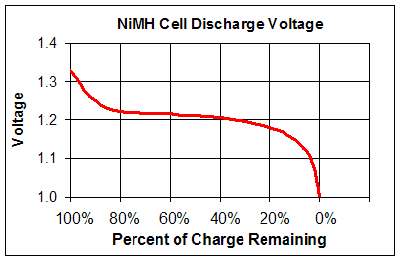Trash80toHP_Mini
NIGHT STALKER
Memory unit's FUBAR ATM, is the duo bat 12V or 24V? If the former, you're gonna need to do quite a bit of hackage. If the latter, maybe not quite so much?
The Duo’s battery is a 12 volt unitMemory unit's FUBAR ATM, is the duo bat 12V or 24V? If the former, you're gonna need to do quite a bit of hackage. If the latter, maybe not quite so much?
Do you think this idea of using that prebuilt pack would work?I can put almost anything together, it simply is a matter of WHAT to put together. This is definitely helpful. You fellas have definitely done some ground-breaking work over the years.
I have a pack open right next to me. There doesn’t seem to be any intelligent parts other than what looks like two thermistors that connect to their own contacts on the logic board, all of the charge circuitry seems to be on the logic board of the powerbookI suppose the question is: is the pack just a bunch of cells, or are there intelligent parts in there that interact with the machine?
There are specific battery reconditioning utilities that can significantly extend the runtime and presumably the life of NiMh cells. Years ago, I managed to revive almost dead batteries (like 30 seconds of runtime) so that they would give an hour or an hour and a half of runtime using these utilities; that battery in your 2300 was one of them. The utilities worked best alongside of freezing the things (physically, as in a freezer or leaving in an unheated space overnight) beforehand, which has an effect on crystals that form in old cells. You just let the thing thaw for a day or so, which (one hopes) also deals with condensation.Is there a specific regular care routine for NiMH batteries that extends their life?
yes that's right, Battery Amnesia and Apple's own Battery Recondition, I'll try freezing both batteries tonight and see how long of a charge I can get out of themThere are specific battery reconditioning utilities that can significantly extend the runtime and presumably the life of NiMh cells. Years ago, I managed to revive almost dead batteries (like 30 seconds of runtime) so that they would give an hour or an hour and a half of runtime using these utilities; that battery in your 2300 was one of them. The utilities worked best alongside of freezing the things (physically, as in a freezer or leaving in an unheated space overnight) beforehand, which has an effect on crystals that form in old cells. You just let the thing thaw for a day or so, which (one hopes) also deals with condensation.
Check your 270c for these utilities. If I remember correctly, there is one there from Apple, and one from a third party. They both do much the same thing.
I have a pack open right next to me. There doesn’t seem to be any intelligent parts other than what looks like two thermistors that connect to their own contacts on the logic board, all of the charge circuitry seems to be on the logic board of the powerbookI suppose the question is: is the pack just a bunch of cells, or are there intelligent parts in there that interact with the machine?
Good point, I may end up following your guide and make a lithium pack12v nominal perhaps, but charged voltage per the Service Source is indeed 13.5vdc:
View attachment 39726
Build a battery that outputs only 12v fully charged and you'll have low-voltage warnings and to look forward to
12v nominal perhaps, but charged voltage per the Service Source is indeed 13.5vdc:
Very interesting, I’ll be buying some cells in the next few months so I can make my 2300c truly portable againThere is some interesting information (in French) here:
https://forums.macg.co/threads/batterie-pour-powerbook-140-180.1291284/
Scroll down and the Duo battery comes up. Google translate is your friend (assuming that your high school French teacher was not).
Good point, I may end up following your guide and make a lithium pack
Makes sense, what's the rating of each cell? That baseline x10 has to be over 12V and maybe a just a bit under 15V given a little inefficiency? Can't believe I missed your thread over the summer, nice work. But that's way beyond the scope of what I can do.
You've inspired me to pull out the toolbox casing the hack from what's now been eight years ago! I'll start hunting down the rest of the parts and maybe have another go at that BTI high capacity NiMH setup vs. OEM NiMH setup testing project when I get a chance. Have you any notions about what the BTI PIC controller board might do to fool the Duo into charging their pack to higher capacity than Apple intended for the OEM packs?

By all reports I've seem, using higher capacity cells doesn't work well at all because the Duo won't charge them fully, hence undercharging memory effects for more bad karma. The higher capacity BTI packs with the PIC controller board replacing the blue thingie in the diagram below (the two-wire EEPROM? ) will charge them fully, No undercharged memory effects for the higher capacity cells and more runtime for the Duo.
The PIC controller board would make for a truly intelligent recharging system. Or maybe a bully breaking a less than intelligent charging system to its will?
